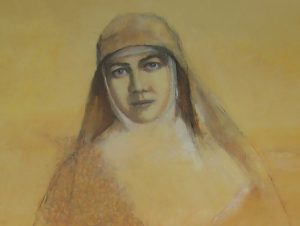
Mary was born in Victoria to Scottish immigrants. She was the eldest of eight children and spent her early years working to support her family. At the age of 24 she dedicated her life to God and took on the name “Mary of the Cross”.
Along with Fr Julian Tenison Woods, Mary opened a school in a disused stable in Penola, South Australia. Her vision was to provide education for underprivileged children. Many other women came to join her there, and Mary and Julian founded Australia’s first religious order: the Sisters of St Joseph.
Mary and the Sisters were committed to serving the poor – to going to where the need was and living amongst those in need. This took Mary all over Australia to many rural areas.
Mary faced fierce opposition throughout her life, which at one point culminated in her being excommunicated. In the face of trial, Mary was a model of forgiveness, insisting no ill be spoken of those who wronged her, while also remaining resolute in her convictions.
Mary was remarkable as a strong female leader in 19th century Australia. Education in this country is what it is today thanks to her dedication and determination.







